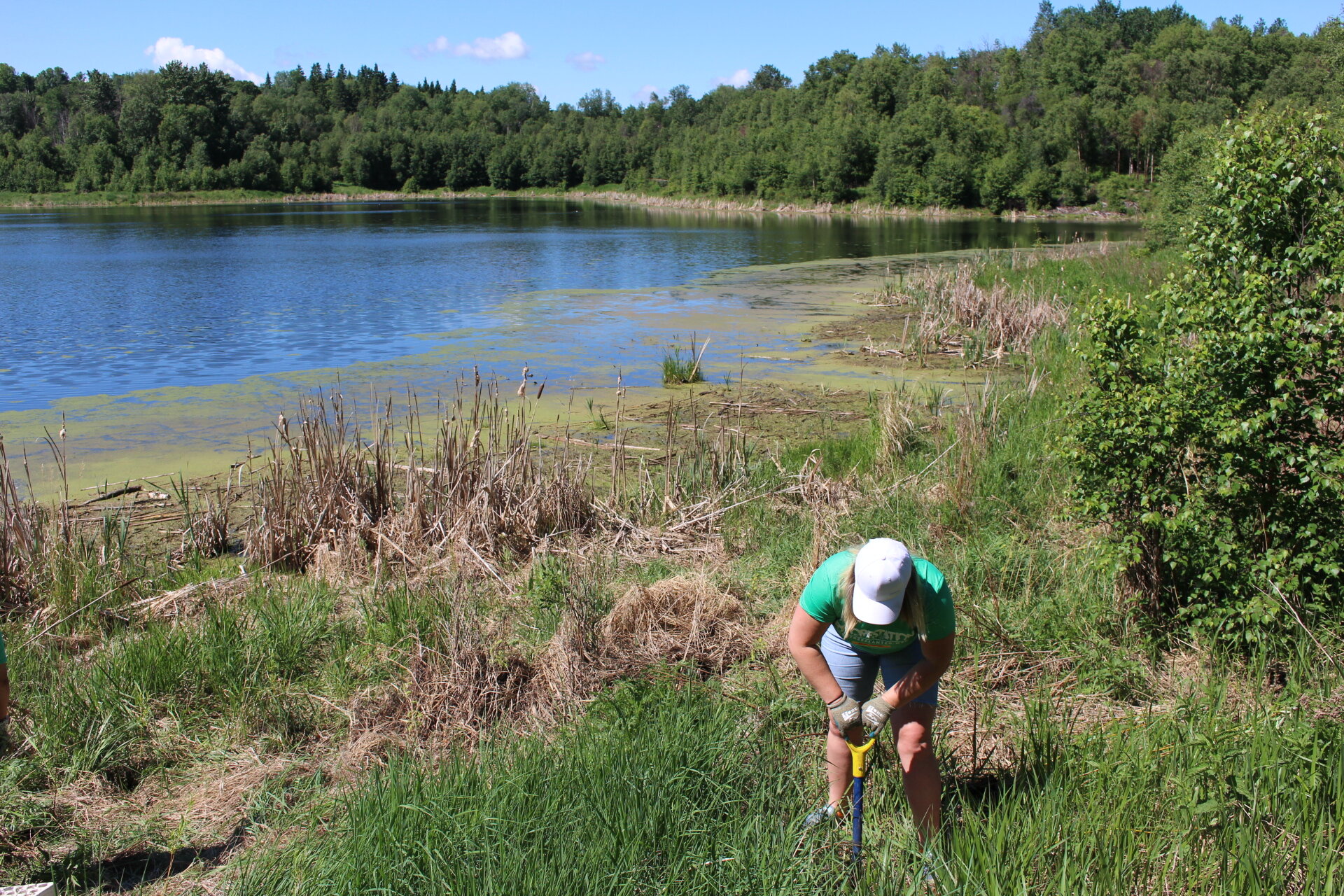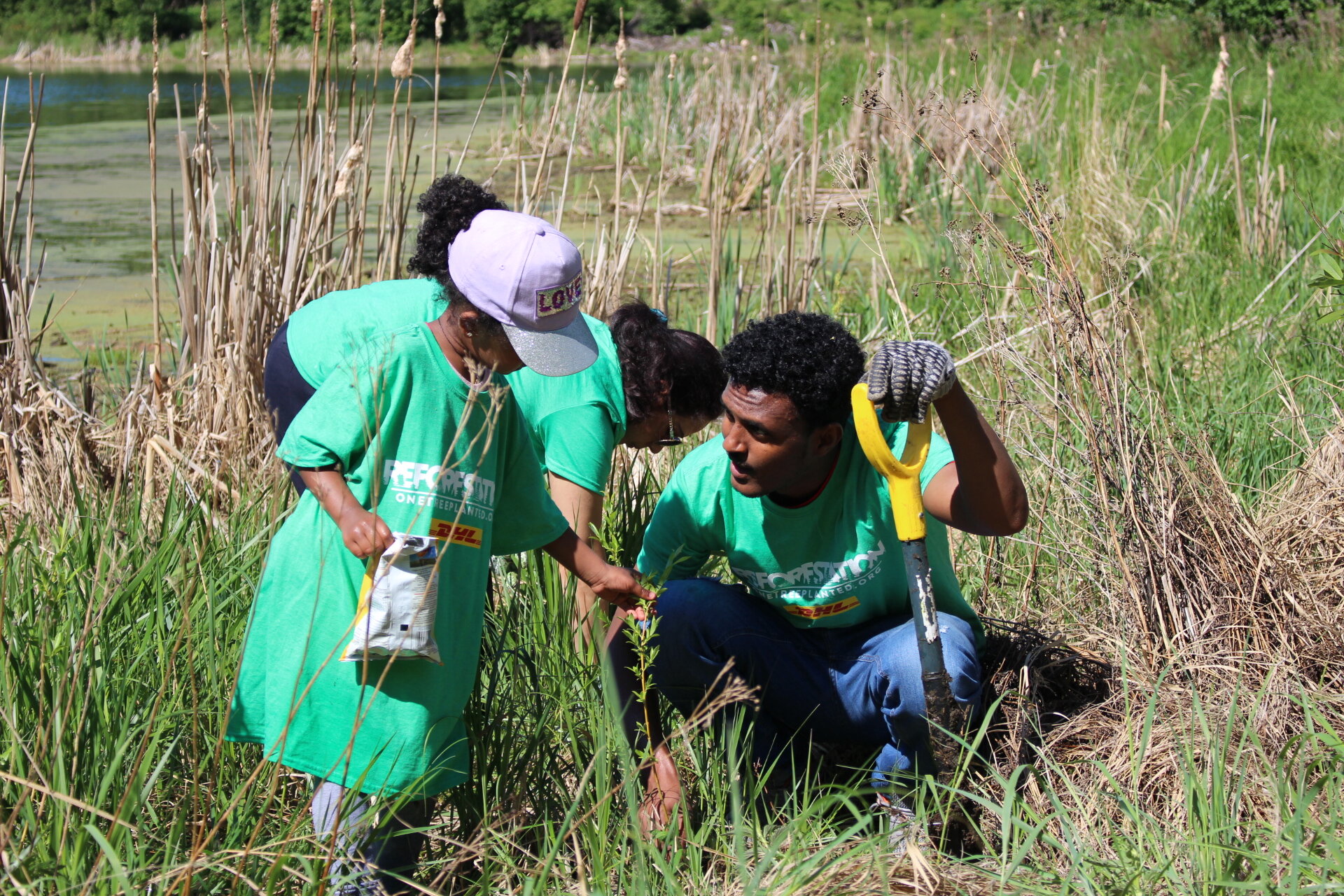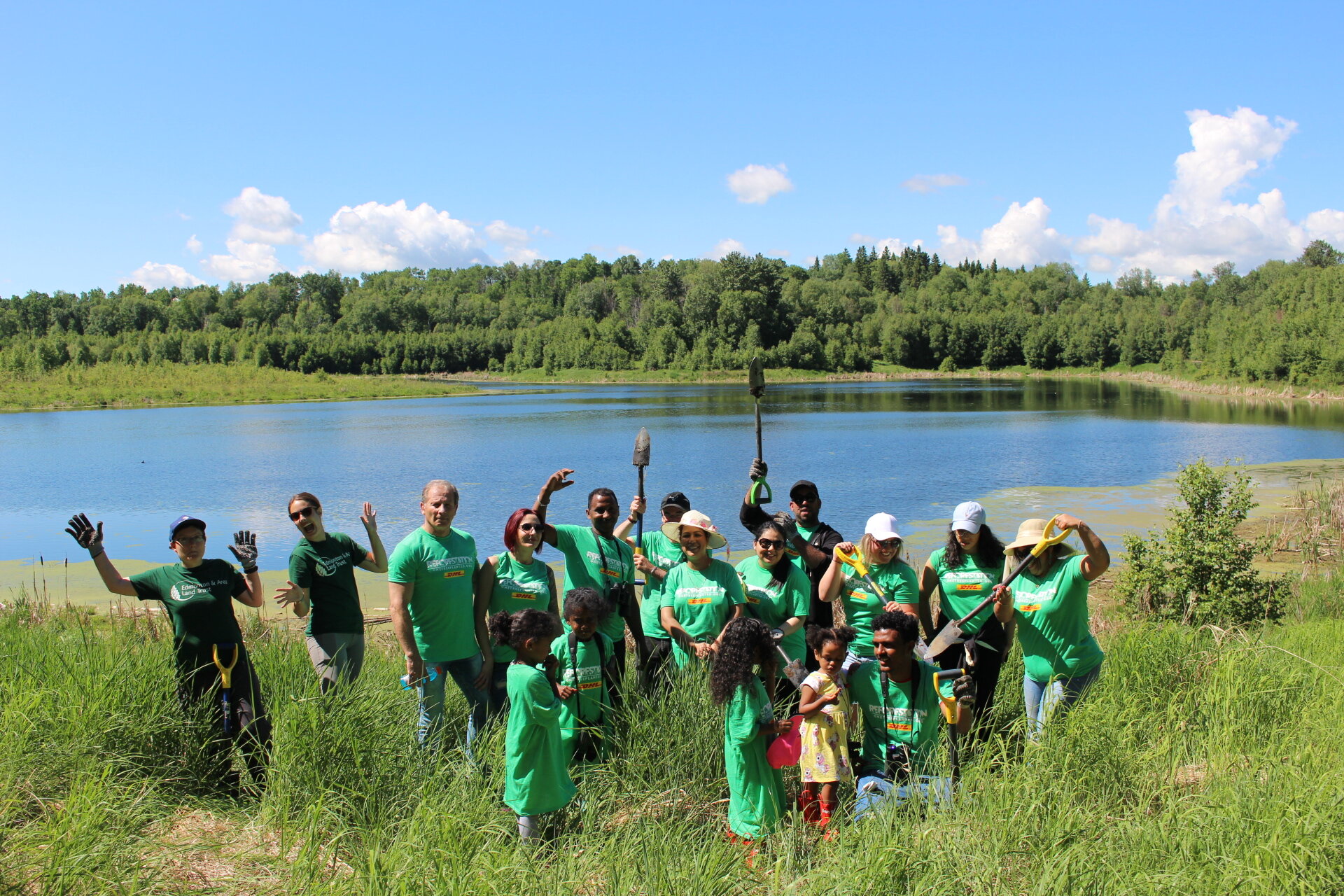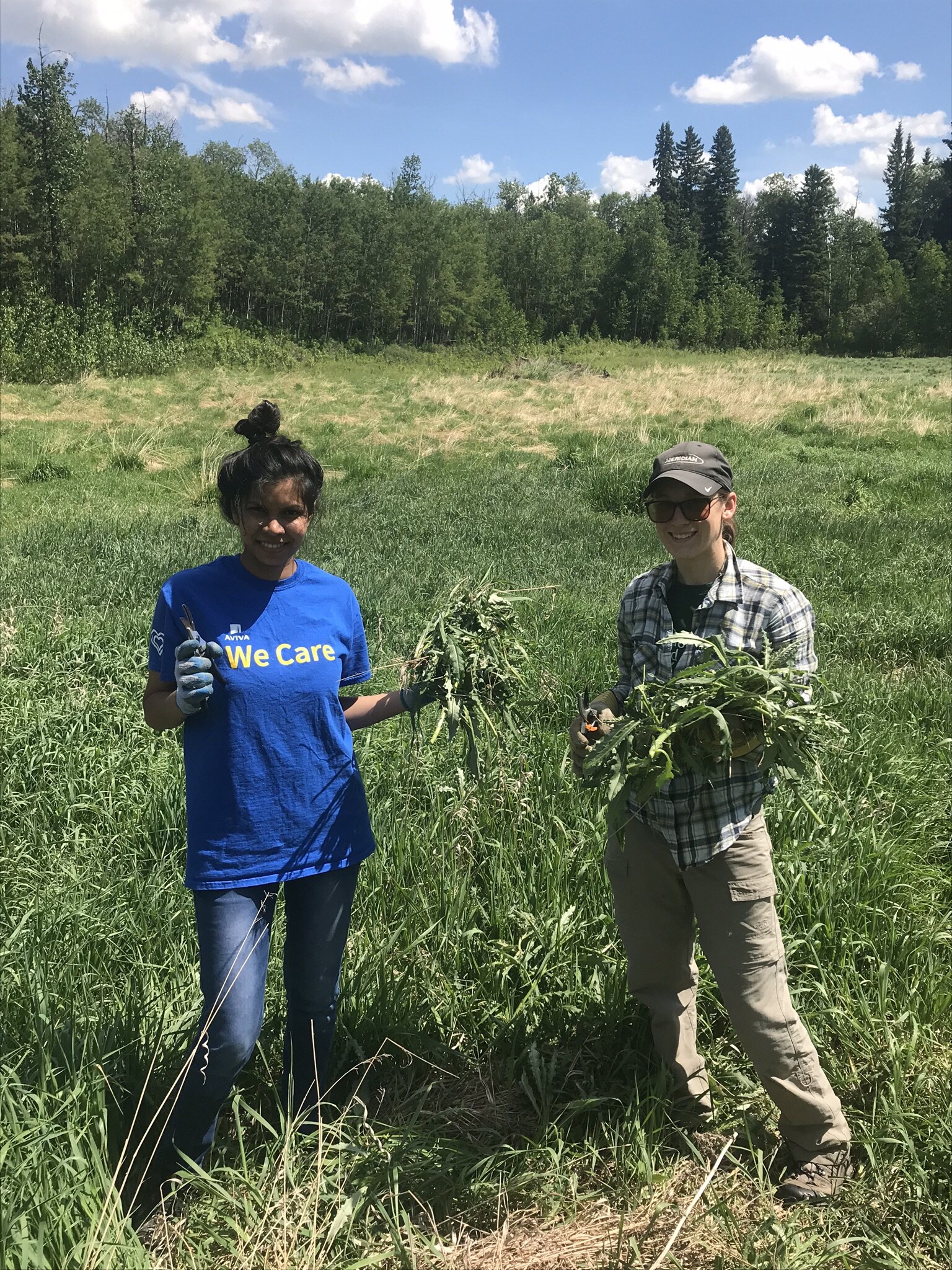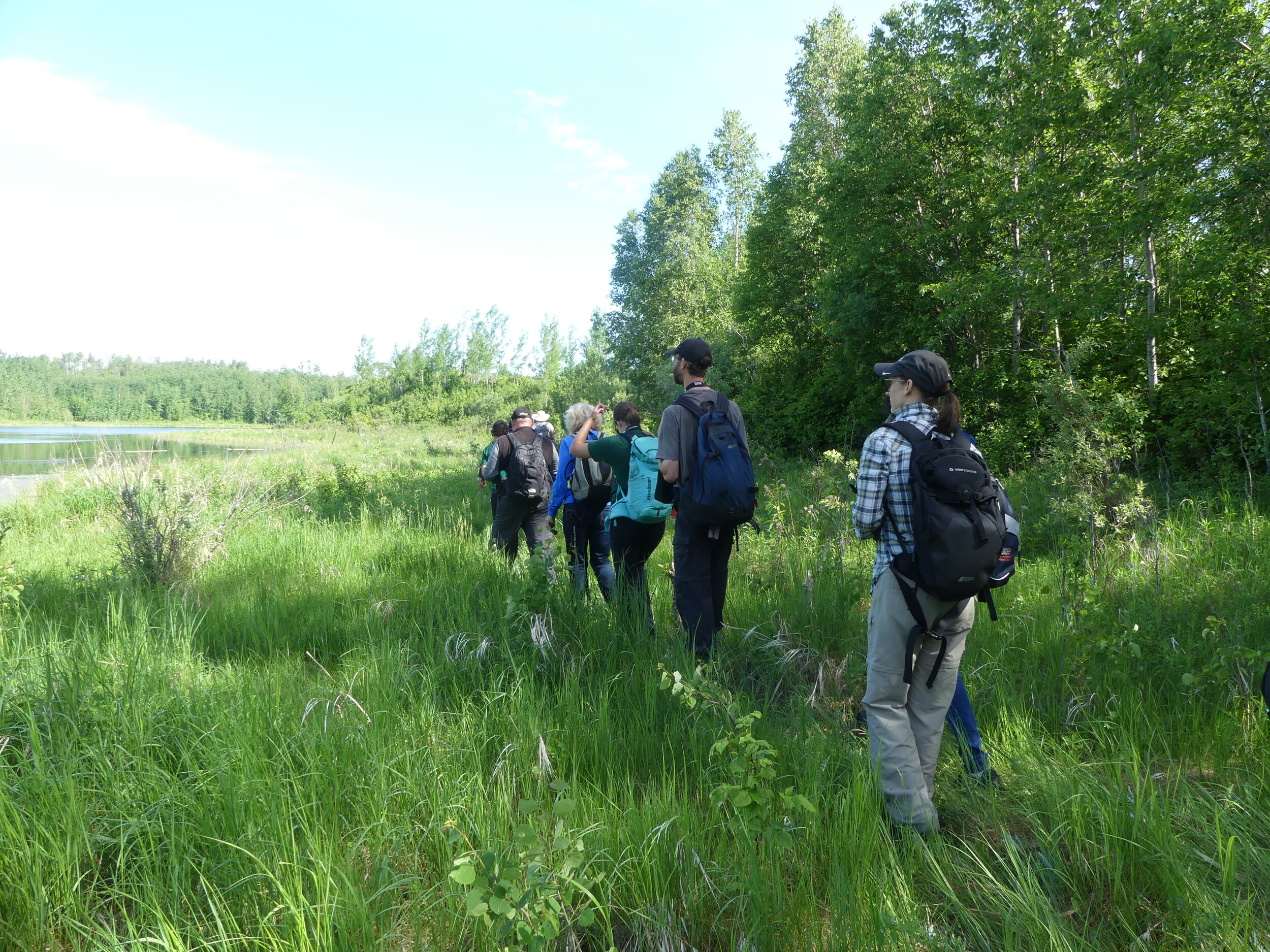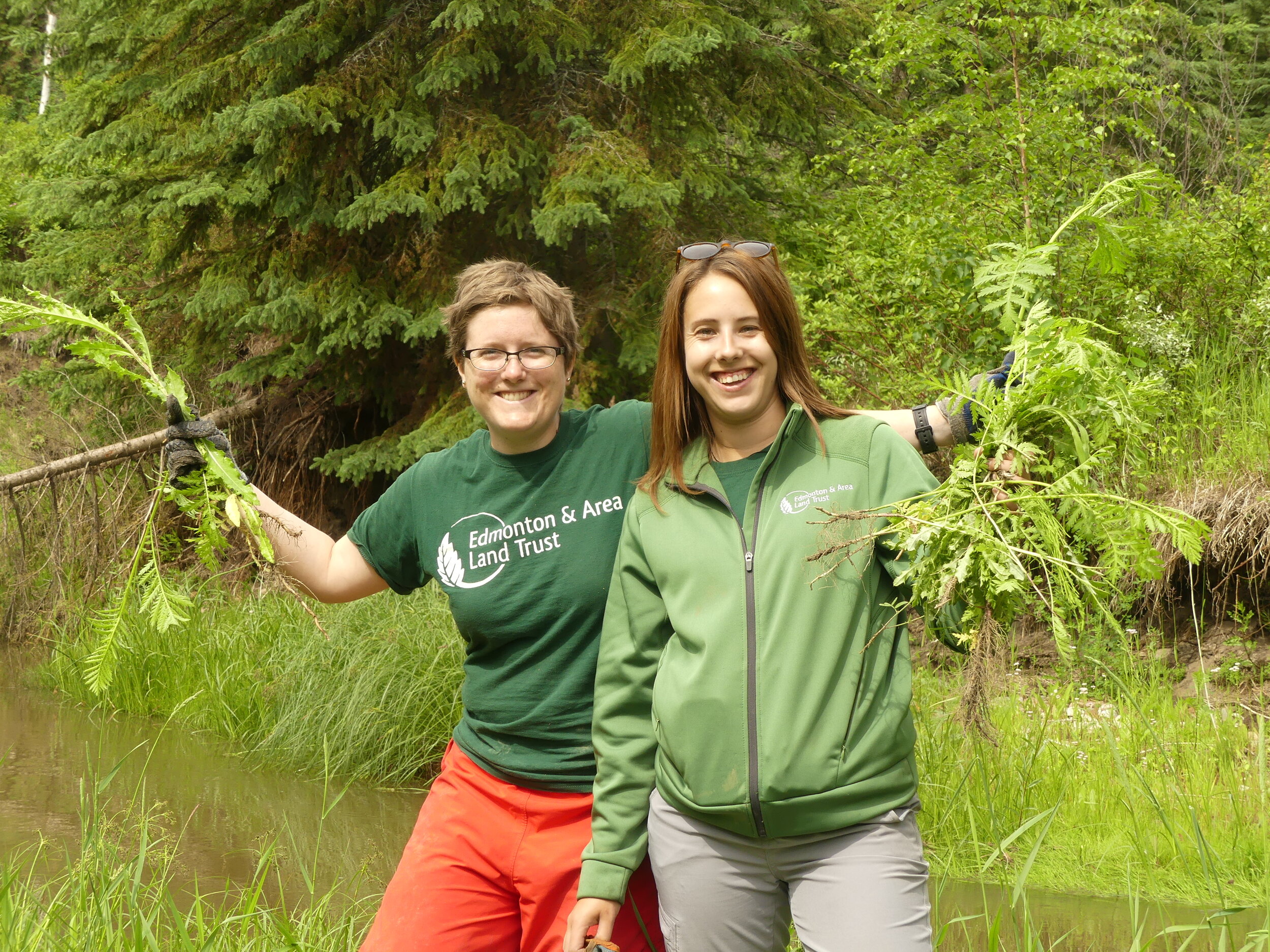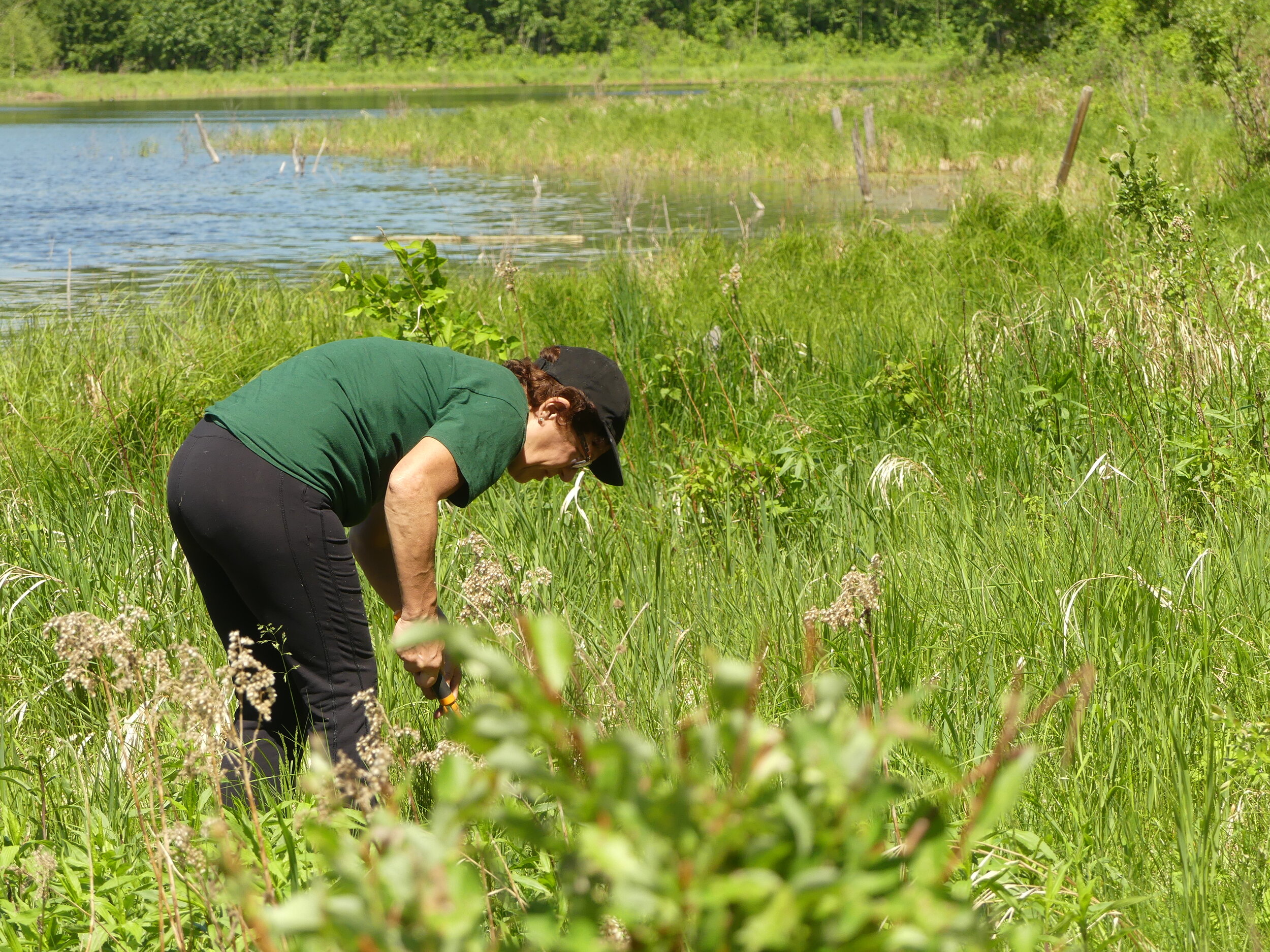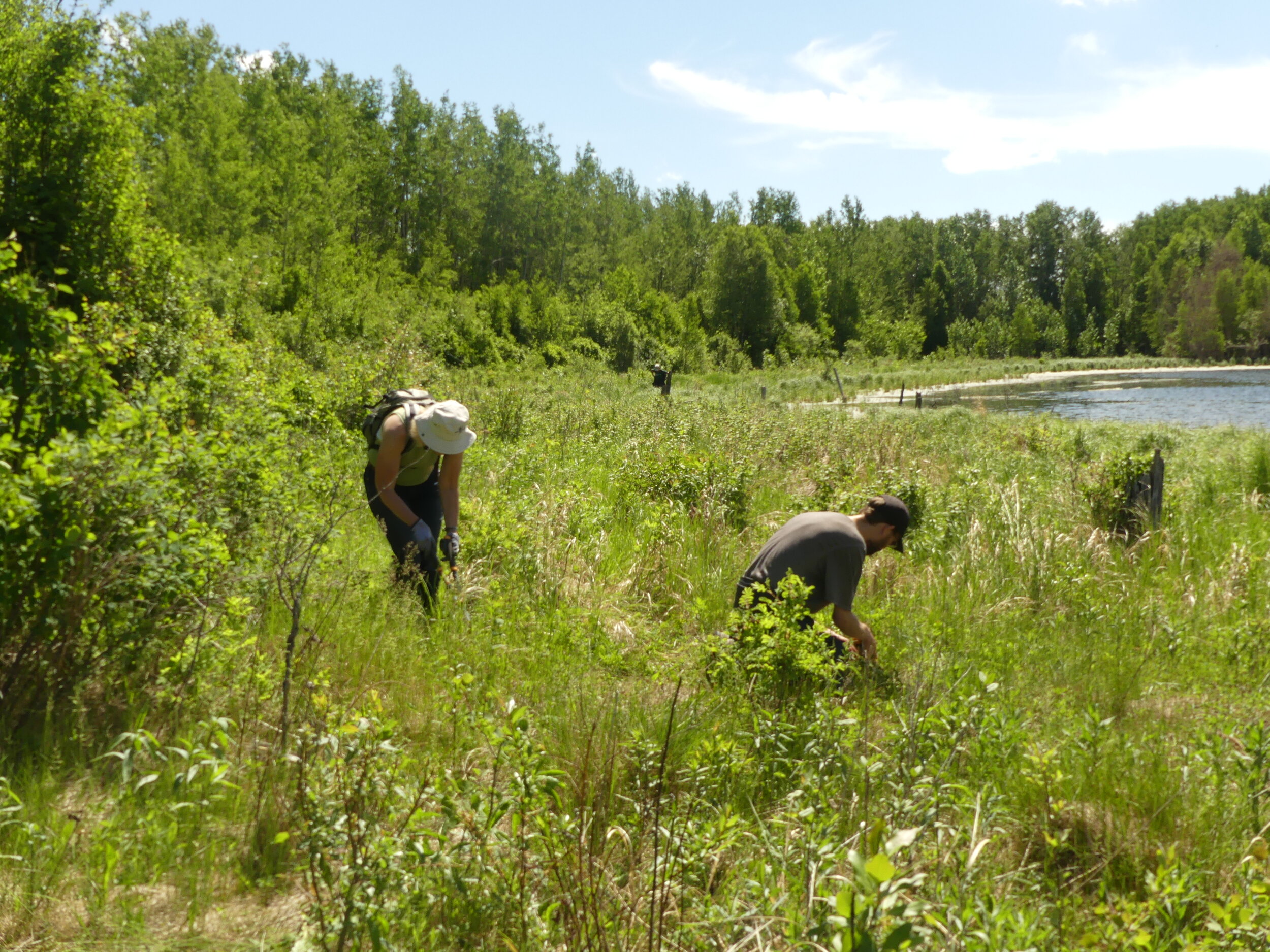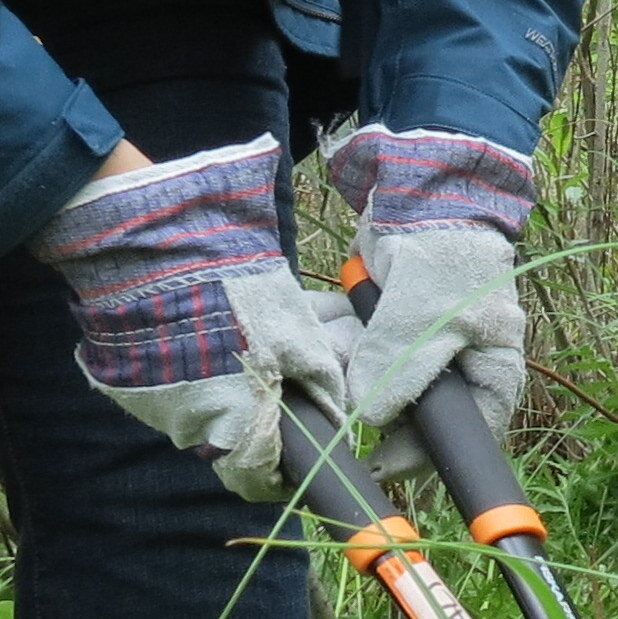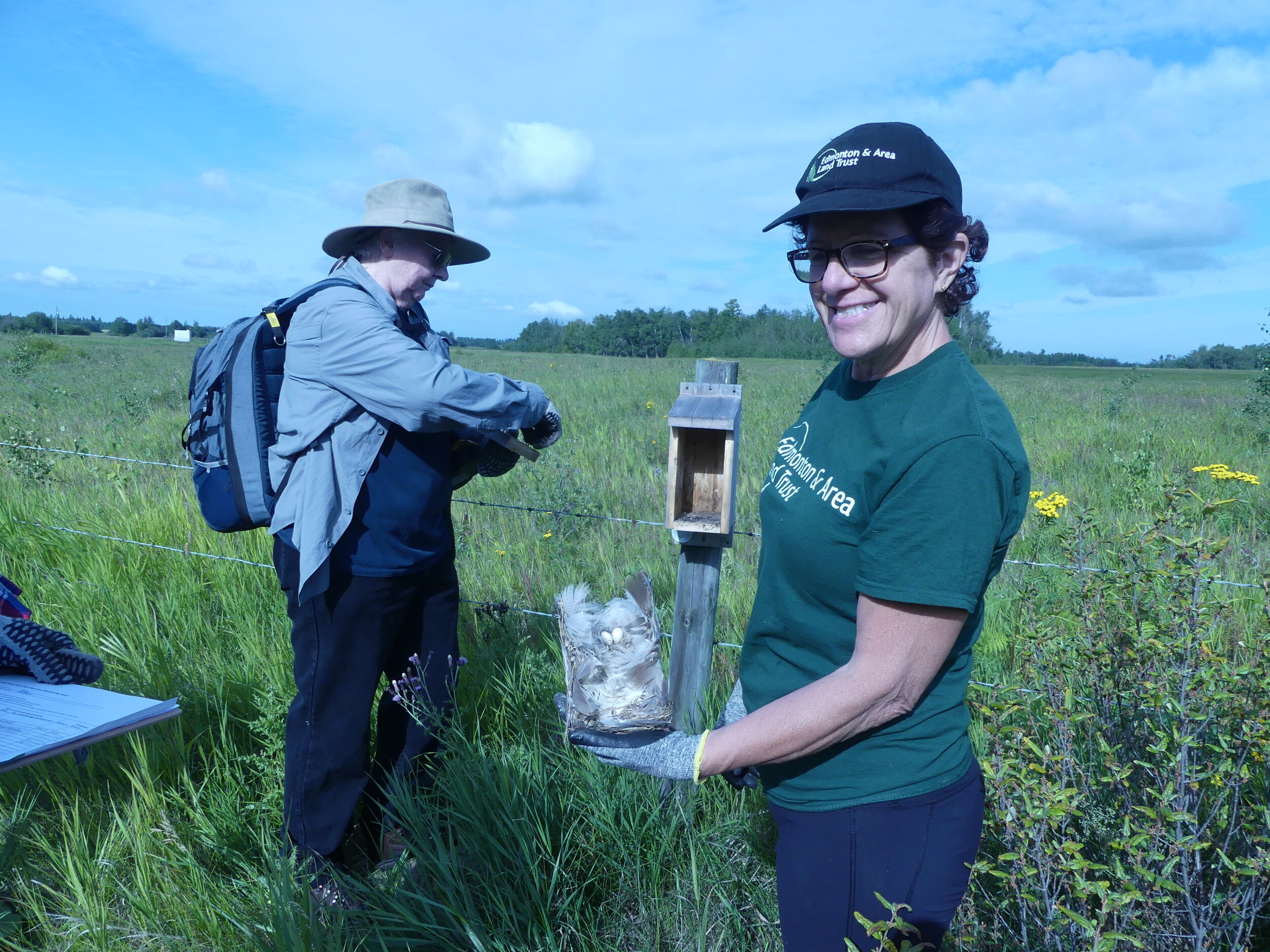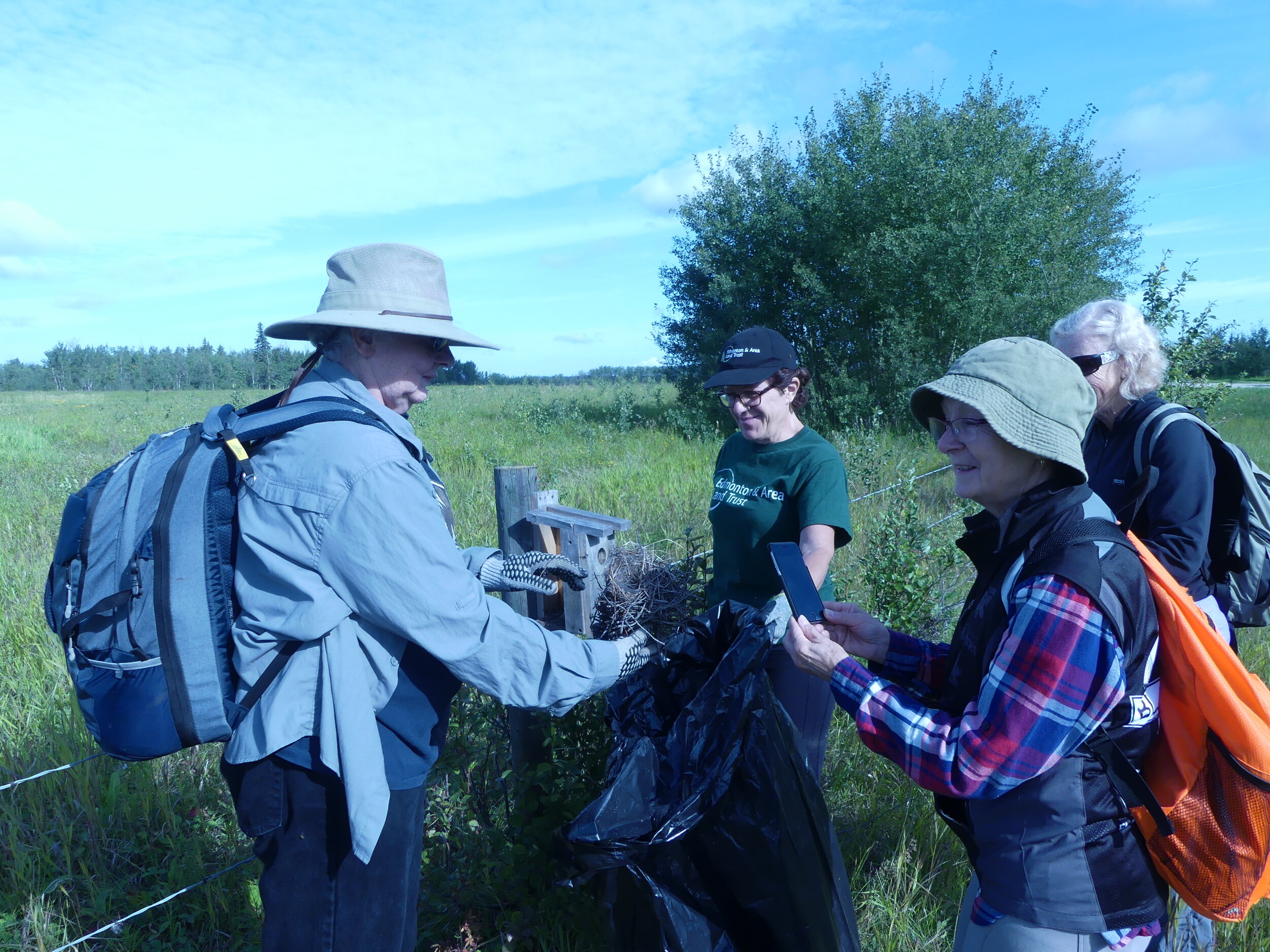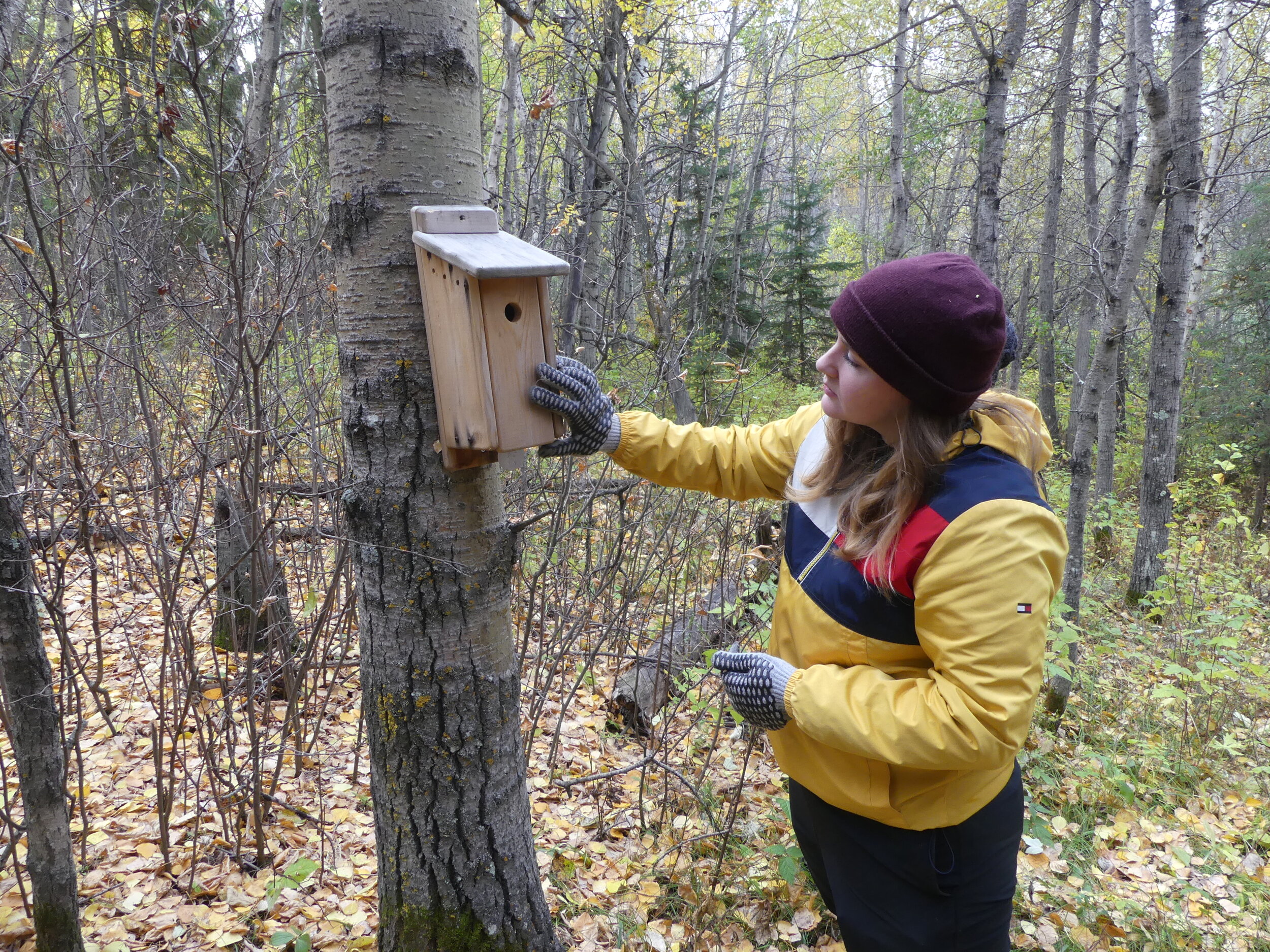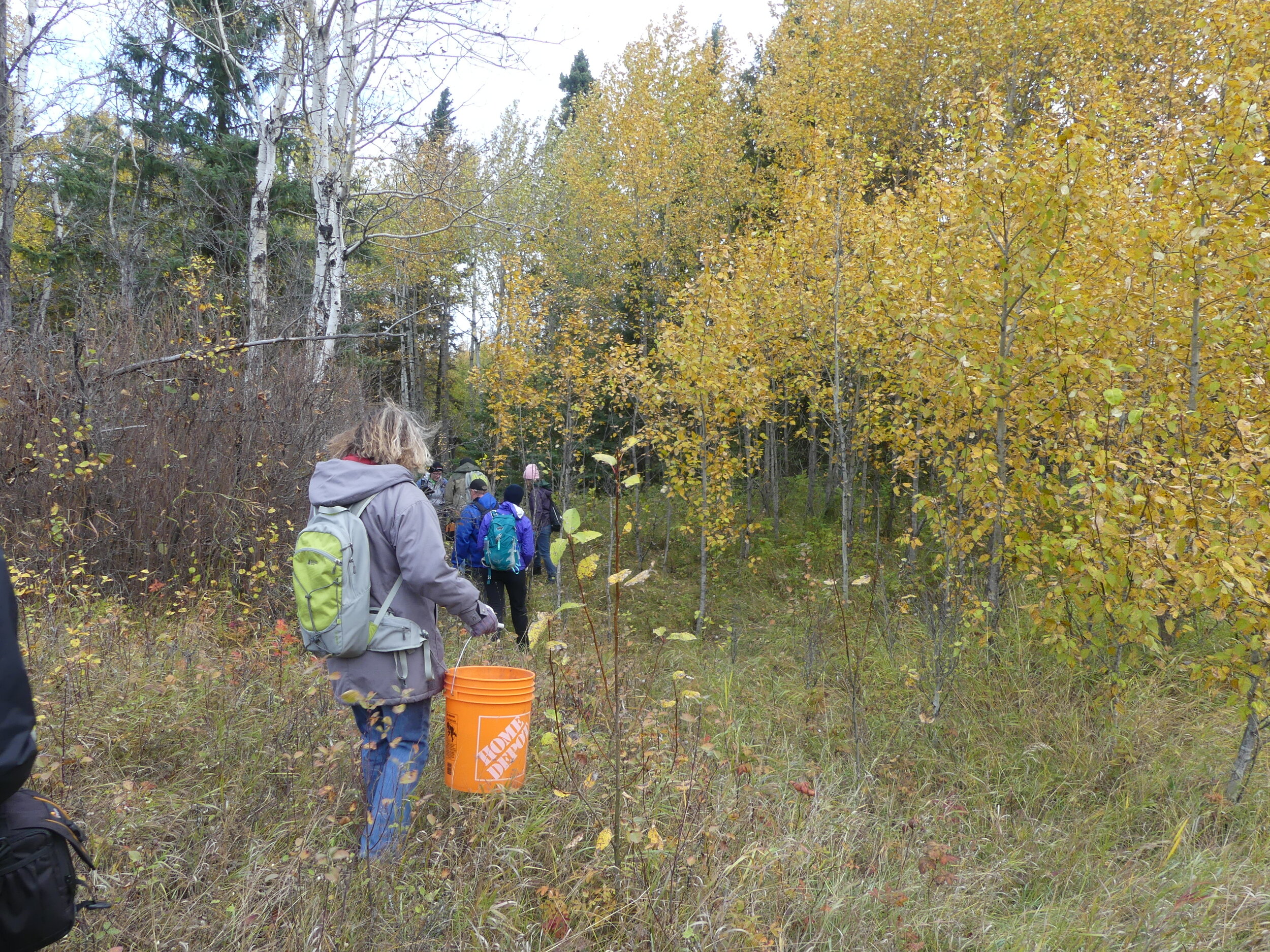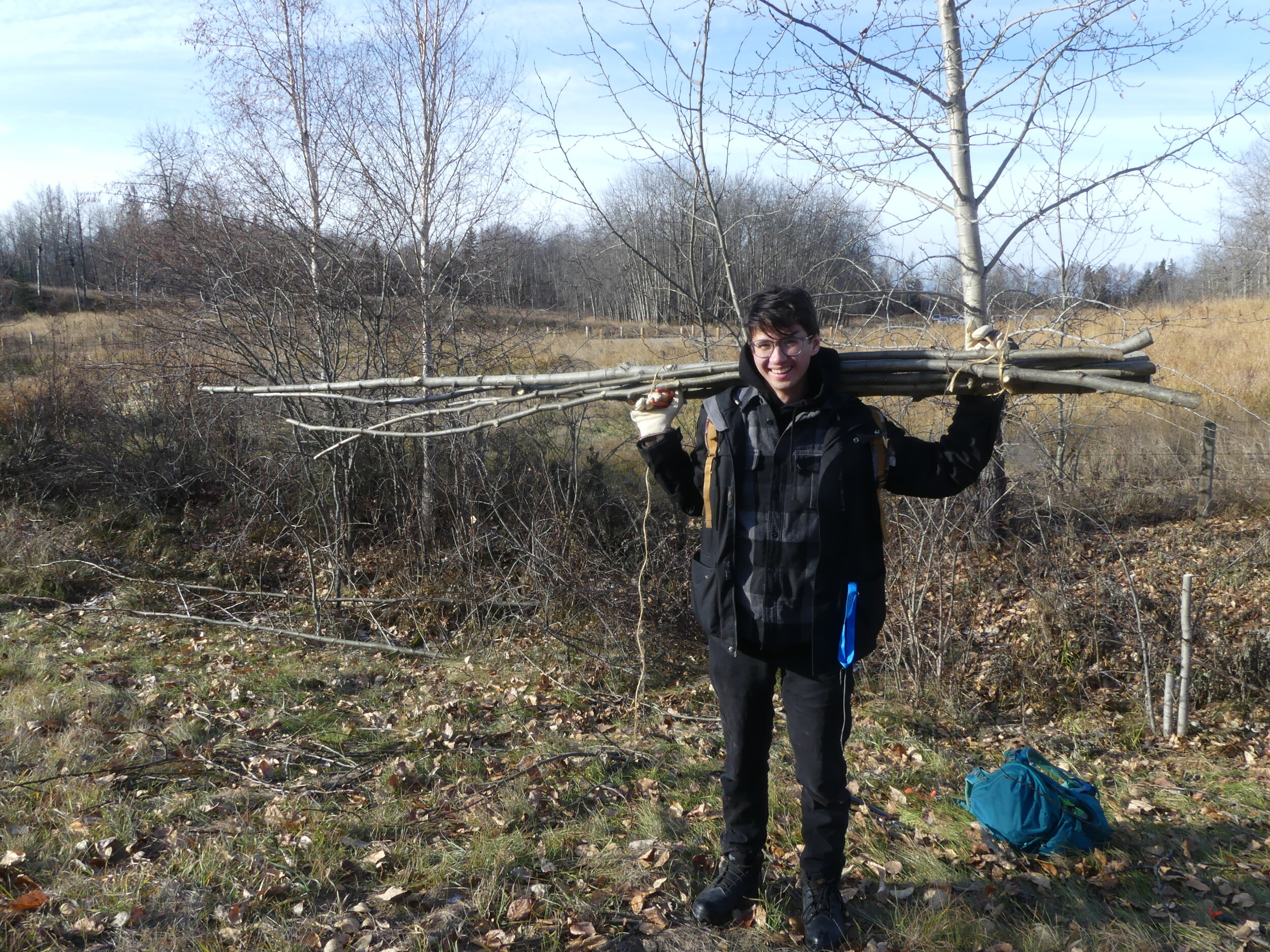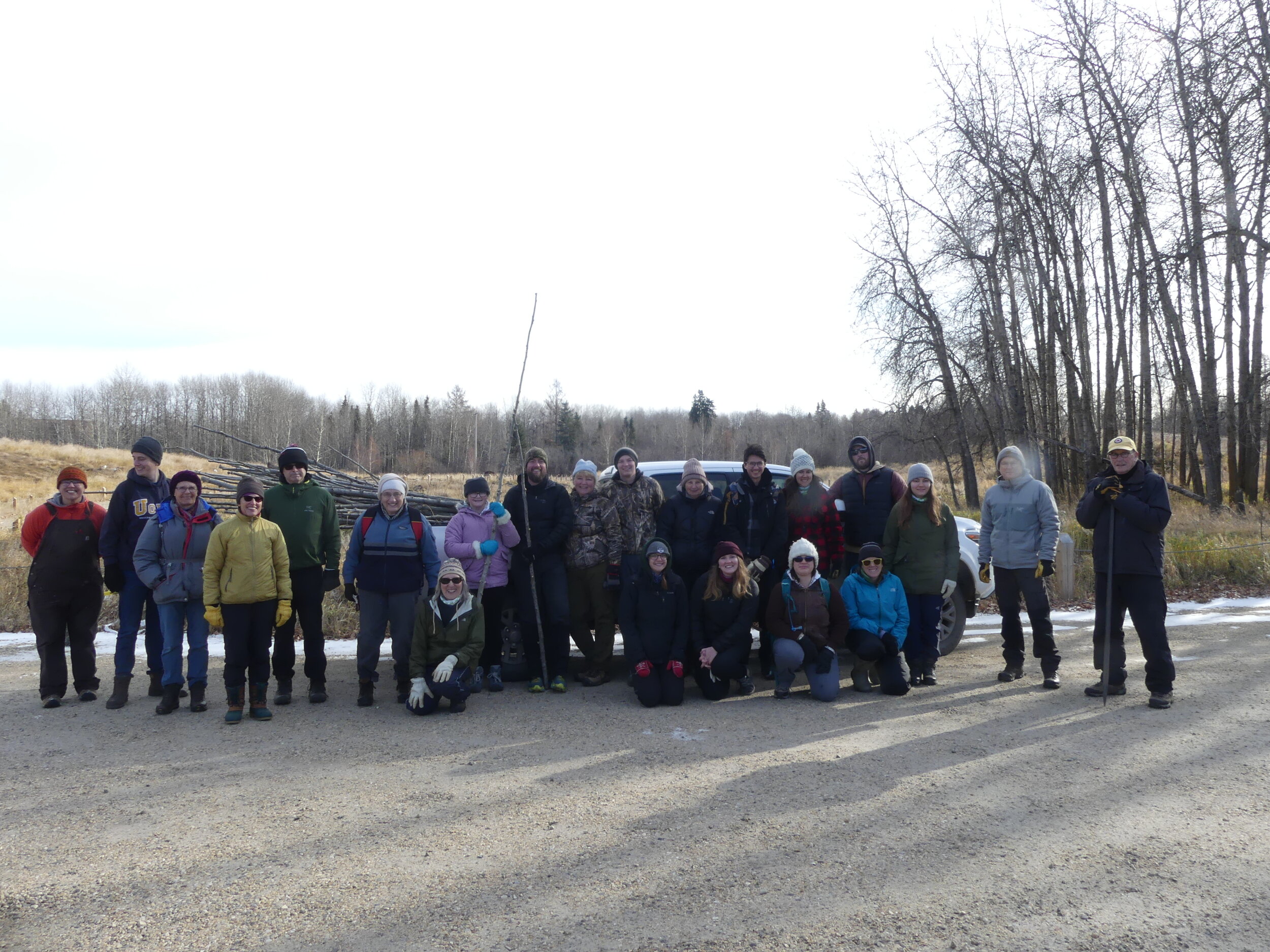We were busy bees indeed this summer! As we continue to grow, so does the workload to properly monitor and steward our many lands. Staff, interns, and volunteers all came together over the summer to help complete our summer fieldwork tasks. Here are some of the things we accomplished this season.
Loon Survey
This was the first year EALT participated in the Canadian Lakes Loon Survey, a program run by Bird Studies Canada to track Canada Loon reproductive success in the face of population declines. This program has been running since 1981 and involves visiting a lake three times throughout the summer: Once in June to check whether a loon pair is present, once in July to see if the chicks have hatched, and once in August to see whether the chicks will survive.
EALT monitored the lakes at the Smith Blackburn Homestead, Lu Carbyn Nature Sanctuary, and Glory Hills. At the Smith Blackburn Homestead, we noted that a pair had started building a nest in the spring but were unsuccessful as no chicks ever hatched. However, at the Lu Carbyn Nature Sanctuary, a pair of loons successfully hatched one large chick! And while we often have loons nesting at Glory Hills, there were none this year, but staff did see a pair of red-necked grebes nesting on the loon platform instead.
The data recorded from this monitoring will help ecologists determine what kind of habitat loons need to nest successfully - and you can help! Sign up for the program next year to do some citizen science and monitor your favourite lake.
Bat Boxes and Monitoring
Over the last few years we have put a lot of work into installing bat boxes on our lands - and it paid off! This summer we conducted a variety of different monitoring activities in partnership with the Alberta Community Bat Program to find out how many bats, and what species, were using our bat boxes. EALT staff and interns did night driving transects and exit surveys, put up stationary passive microphones, collected bat guano (their poop!), and even did an evening of bat mist netting. You can read more about what we did here.
We were also finally able to get the bat box put up outside Larch Sanctuary! This is a great location for the bat box because it is fairly close to a water source, close enough to the forest, and also publicly accessible, making it a great public education opportunity. To help with the public outreach side of things we also put up interpretive bat signs to provide people with a little more information on our local bats.
Shrub Planting
In the springtime, we hosted DHL employees and their families at Glory Hills to help us plant some shrubs and trees near the lake. With their help we were able to plant 200 shrubs - sandbar willow, peach leaf willow, and balsam willow, as well as a few spruce and birch trees. If you are interested in hosting a corporate or group volunteer event, you can submit a request here.
Wildlife Cameras
Did you know we usually have 15-20 wildlife cameras on our conservation lands? We rely on these cameras to get a sense of what wildlife are using our lands. This year we snapped photos of lynx at both Coates and Glory Hills! We’ve also captured fishers, skunks, moose, coyotes, white-tailed and mule deer, red foxes, porcupines, snowshoe hares, and more!
Weeding for Wildlife
It may sound dull, but managing invasive plants on our lands is one of the most important tasks we do to ensure that the native ecosystem stays healthy. Invasive species that have not evolved in this region can quickly overtake an ecosystem and choke out native plants that are an essential source of food and shelter to wildlife, including pollinators. Some of the ones we tackled this year include: common tansy, orange hawkweed, white cockle, tall buttercup, leafy spurge, and thistle.
Water Quality Monitoring
To meet our conservation commitments, EALT staff monitored the water quality of Willow Creek at Coates Conservation Land and Whitemud Creek at Larch Sanctuary. In doing so, we make sure that the water systems on the lands we manage are healthy with no major fluctuations or problems. We record the temperature, turbidity, pH, dissolved oxygen, and electrical conductivity. Fortunately, we had another year of good water quality and healthy aquatic systems!
Nest Box Cleaning and Installation
This year we cleaned out the almost 400 nest boxes on our conservation lands! That’s a lot of boxes to maintain, and we could not do it without the help of many dedicated volunteers and groups. To maintain the boxes, we clear out any nesting material of the year, spray with a diluted bleach solution, and replace the shavings. Cleaning out the boxes is important because it helps prevent the spread of mites, disease, and other pests which can be harmful to our native birds. We have boxes for chickadees/wrens, bluebirds/ Tree Swallows, Saw-whet Owls, and waterfowl. And although the holes are meant for certain species, sometimes we get surprise guests - like flying squirrels!
Willow Staking
Fall is the perfect time to stake willows, and that is just what we did! Just last week we co-hosted a volunteer day with the Nature Conservancy of Canada to stake willows at Bunchberry Meadows. When willow and poplar trees are dormant in the fall, we can cut them down and re-plant the trunks to restore a new area - the trunks will re-root themselves there! We did this as part of our restoration efforts at Bunchberry, which you can read more about here.
Nature Walks
Although we don’t necessarily need to offer nature walks on our lands, we love hosting a few of these during the year! They are a fun and relaxing way to get people outdoors and connecting with nature, and gives us or our guest leaders a chance to talk more in-depth about the land, its ecology, and its history. This summer we hosted a Grouse Walk at Pipestone Creek as part of the Battle River Lieutenant Governor of Alberta Arts Awards, an International Migratory Bird Day walk in partnership with the Edmonton Nature Club, and spring and fall migration walks led by Lu Carbyn at the Lu Carbyn Nature Sanctuary.
Thank you for all of your hard work this year! We could not do what we do without the help of our AMAZING volunteers - we are so grateful for everything you do.
Interested in volunteering? Find out more here.



